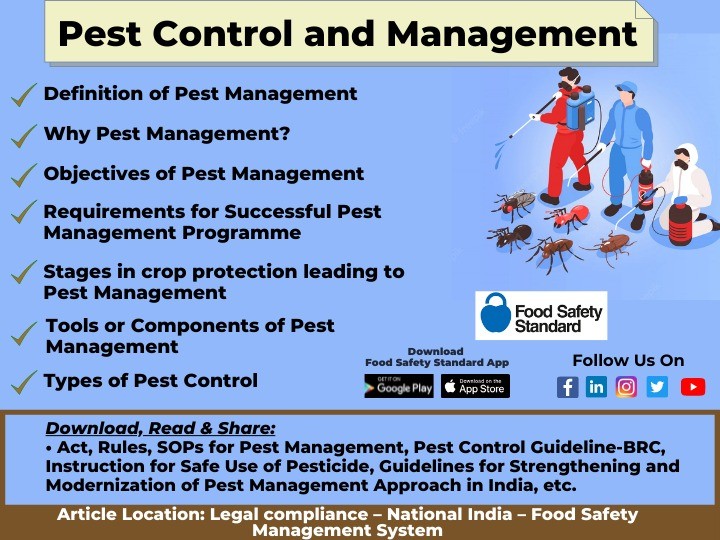Top Guidelines Of Pestwise
Top Guidelines Of Pestwise
Blog Article
The Buzz on Pestwise
Table of ContentsThe Definitive Guide to PestwiseRumored Buzz on PestwiseThe Basic Principles Of Pestwise Rumored Buzz on Pestwise7 Simple Techniques For Pestwise5 Simple Techniques For PestwiseHow Pestwise can Save You Time, Stress, and Money.

Q. Define "incorporated insect management" (IPM) and listing several feasible control tactics that may be used in an IPM approach. A. Integrated insect management is the integrating of proper pest control strategies right into a single plan to reduce bugs and their damage to an appropriate level. Pest control techniques might include: host resistance, biological control, social control, mechanical control, sanitation, and chemical (chemical) control.
See This Report on Pestwise
What can you do to maintain the bugs you are trying to control from ending up being resistant to the chemicals you use? A. Pest resistance can be minimized by using integrated insect administration and rotating the kinds of pesticides made use of.
Parasites are an important threat to the farming company, and incorporated pest management assists farmers address and reduce these dangers. Integrated insect administration uses numerous methods in complicated, thus being an extra effective service to the problem. Mosquito Control. Particularly, getting rid of aggressive chemical approaches allows for reducing injury to people and the atmosphere by utilizing all-natural and more secure options rather
Getting The Pestwise To Work
The goal of incorporated parasite management is to reduce this damage and control acceptable problem levels as opposed to eliminate all undesired populaces. This is why it is very important to understand what steps are justified in each case and use aggressive ones only when various other incorporated monitoring strategies do not function. Integrated administration minimizes the adverse consequences of a non-IPM technique, and the major advantages of IPM Advantages of IPM.
A correct understanding of the problem range determines if the problem should be attended to. are the next components of an IPM program since it is very important to recognize if the microorganisms make potential dangers and make a decision on the incorporated management choices or the particular pesticide usage. intend to decrease invasions by applying various agronomic methods.
Some Ideas on Pestwise You Need To Know
Integrated management options in an IPM program beginning with more secure to extra hostile ones. The above-mentioned integrated administration aspects aid understand how to prepare and apply an IPM program step by step: Monitor your crops routinely.

Amongst others, IPM cultural methods consist of the adhering to field management strategies: dirt treatment; choice of ideal plants; plant rotation; interplanting or strip cropping; option of planting days; weed control; use of trap plants. Positive soil conditions speed up plant growth, and strenuous crops are extra resistant to problems. Healthy seed startings and seeds predetermine successful crop advancement, so it is important to select pest-free growing material with strong origins.
, which is additionally utilized in the integrated pest management system. Alternatively, problems increase when plants of the exact same crop kind or household expand with each weblink other.
In a similar way, potato beetles can hurt growing potatoes, as well as tomatoes. Planting catch plants in patches is one more option for IPM intercropping. This integrated parasite management approach suggests attracting pests to specific plants and after that controlling them with chemical or mechanical strategies. Specifically, you can expand soybeans as trap crops for Japanese beetles.
The Best Strategy To Use For Pestwise
Barriers are common instances of physical IPM approaches. Mature bugs or their eggs and larvae are accumulated by hand and destroyed.

Division of Plant Sciences. University of Missouri. Dirt solarization is a reliable integrated administration strategy to decontaminate the field by heating it in a natural means. This incorporated management method suggests an usual means of destroying insects by killers, parasitoids, virus, and various other biological control representatives (also known as hostile organisms). The role of biological control in IPM is to.
Fascination About Pestwise
With time, their populace became a real problem to farmers alongside aboriginal kangaroos or dingoes. The walking cane toad is one more situation showing integrated organic control failing hereof when it refused to hunt the target species and became a pest itself. Parasitoids create on or within their hosts to ultimately kill them after maturing.
Report this page